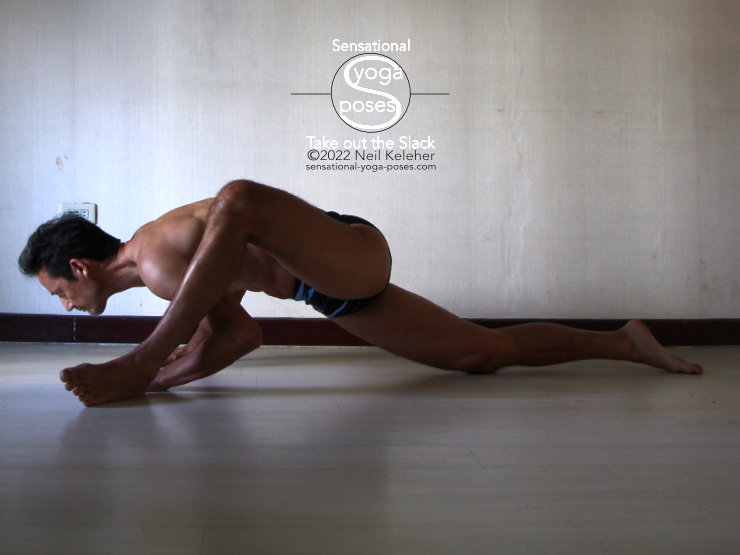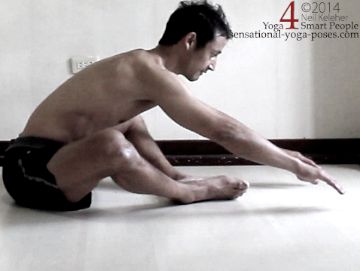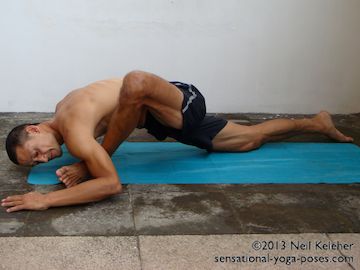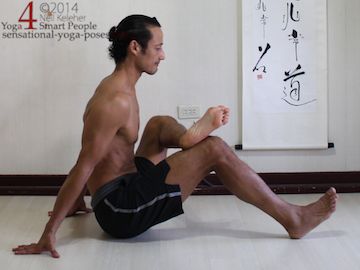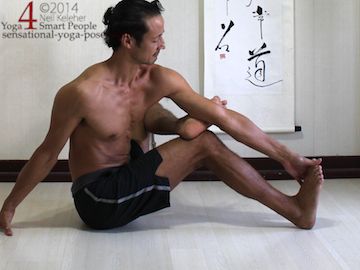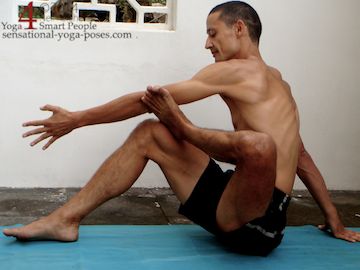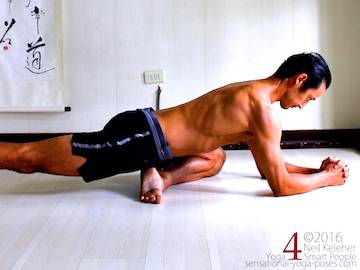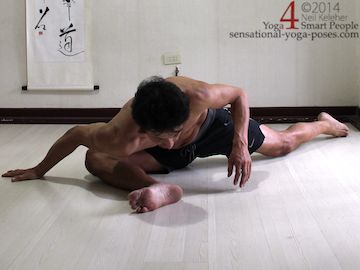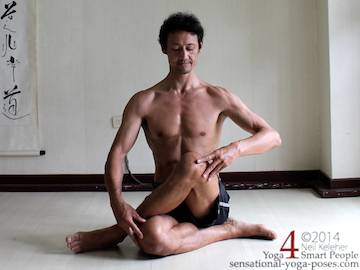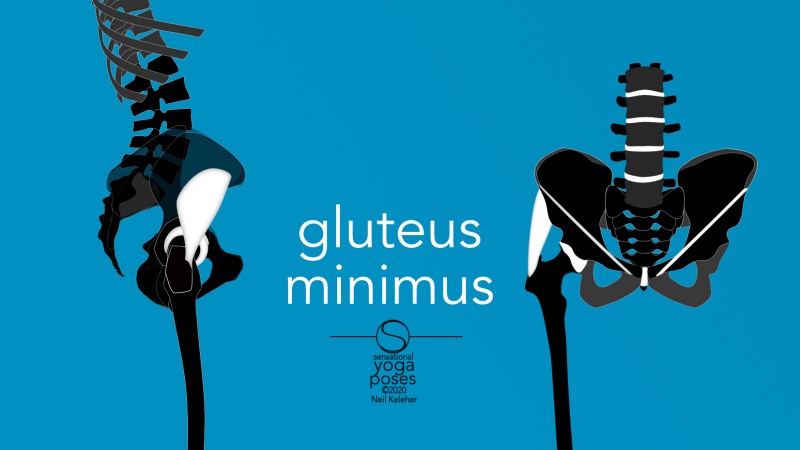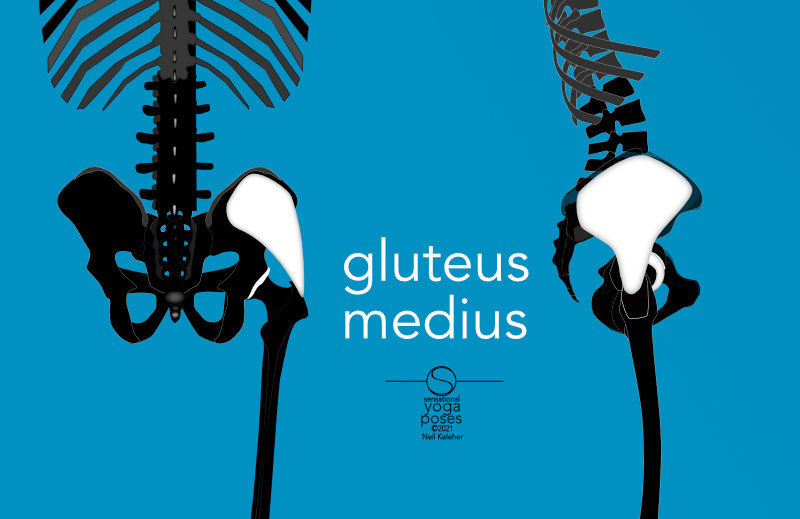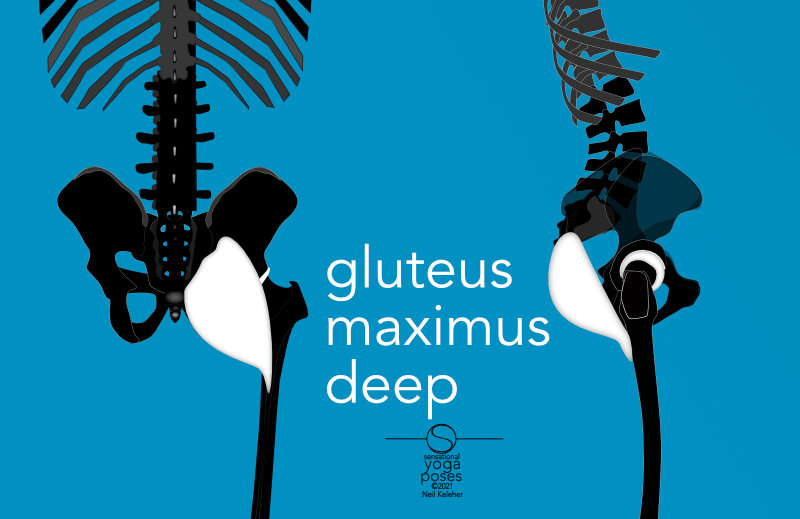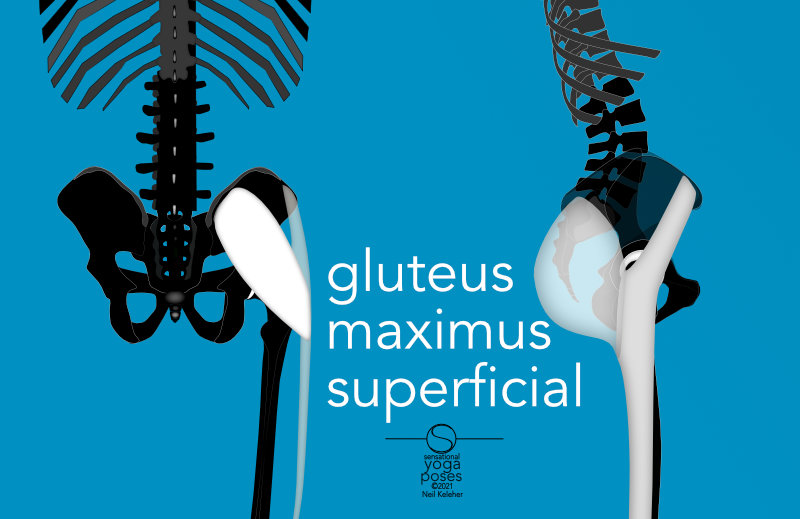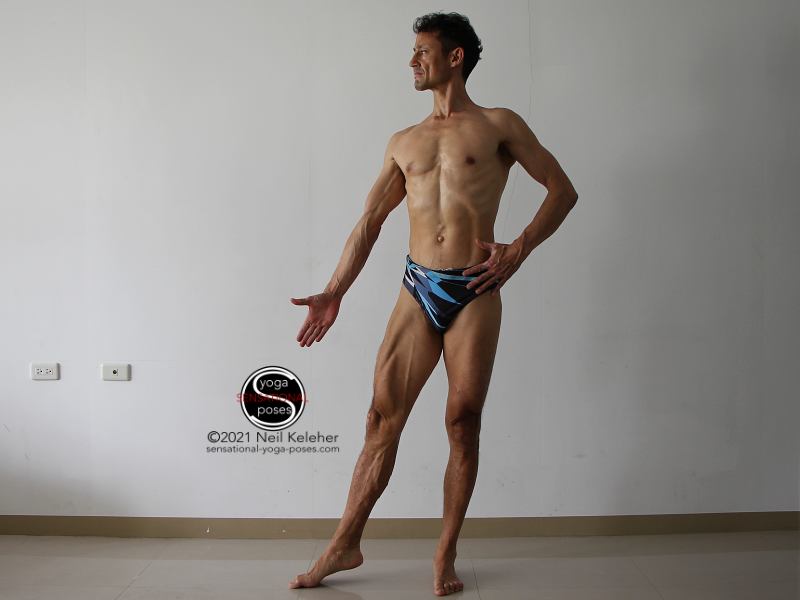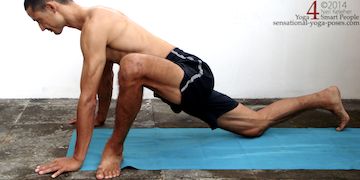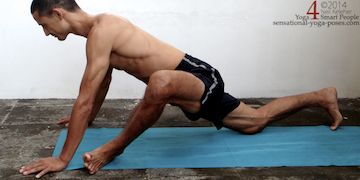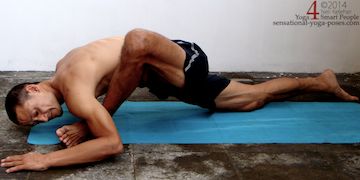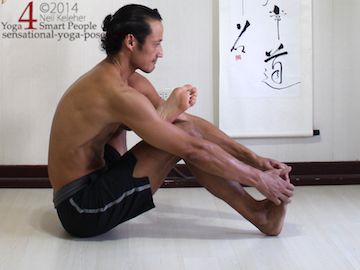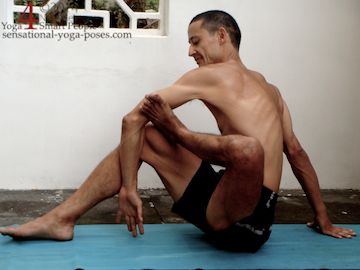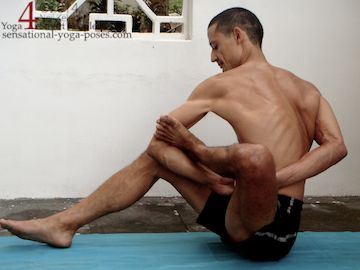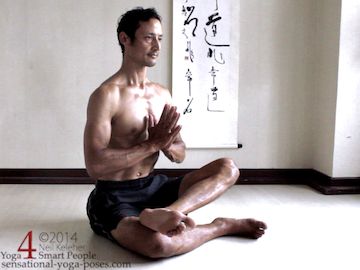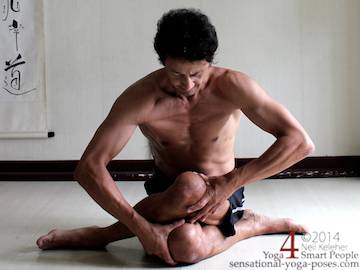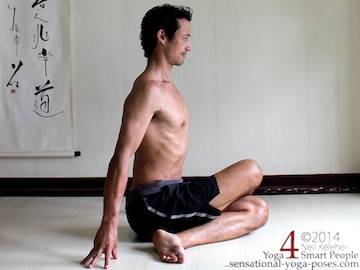Sensational Glute Stretches
Gluteus Muscle Anatomy and Effective Stretches for the IT Band, Piriformis, and Gluteus Muscles
The glutes are a set of three muscles that work on the hip and that can also have an affect on the knee. To stretch the glutes effectively, it can help to first of all understand the glute muscles and what they do. It can also help to understand how to anchor these muscles so that they can be stretched effectively.
A brief introduction and overview of the glutes
The glutes are a set of three muscles that are located at the side and rear of the hip bone.
Gluteus minimus
The gluteus minimus is positioned towards the front of the hip bone and from there extends back and down to attach to the top of the femur.
Gluteus medius
The gluteus medius is more centrally located. It extends downwards to attach to the top of the femur, in part overlapping the gluteus minimus.
Gluteus maximus (deep and superficial)
The gluteus maximus is located at the rear of the hip. It in part overlaps the gluteus medius. The deeper layer of this muscle attaches to the back of the femur.
The more superficial portion attaches to the back edge of the IT band which runs down the side of the thigh to attach to the top of the tibia.
Note that parts of the gluteus maximus attach to the sacrotuberous ligament. Other parts may attach to the long dorsal sacroiliac ligament. Depending on circumstance, it may be helpful (at least initially) to model the sacrotuberous fibers as part of the deep gluteus maximus (attaching to the femur) and the long dorsal sacroiliac fibers as as part of the superficial gluteus maximus.
What do the glutes do?
Let's assume an upright standing position with weight on one leg. The other leg can be slightly lifted with the toe(s) lightly touching the floor.
Gluteus mimimus functions
On the supporting leg side:
- The gluteus minimus can be used to turn the pelvis inwards, towards the supporting leg.
- It can also be used to help tilt the pelvis forwards.
- It can also be used to help lift the opposite side of the pelvis.
On the lifted leg side:
- It can be used to rotate the thigh inwards relative to the hip bone.
- It can be used help pull the leg forwards relative to the hip bone.
- And And it can be used to pull the leg outwards.
Gluteus medius functions
On the supporting leg side:
- The gluteus medius can be used to help turn the pelvis outwards, away from the supporting leg.
- It can also help in lifting the opposite side of the pelvis.
On the lifted leg side:
- it can be used to help rotate the lifted leg externally.
- And it can be used to help move the leg outwards.
Gluteus maximus functions
On the supporting leg side:
- The gluteus maximus can be used to rotate the pelvis away from the supporting leg.
- it can be used to push the pelvis forwards relative to the feet.
- and it can be used to tilt the pelvis rearwards.
- The superficial fibers can help lift the opposite side of the pelvis.
- The deeper fibers can be used to pull the leg inwards.
On the unweighted side:
- it can pull the leg backwards,
- it can pull the leg outwards (superficial fibers)
- it can pull the leg inwards (deep fibers)
- And it can exernally rotate the thigh.
Gluteus maximus and SI joint stability via ligament tension
Because glute maximus has attachments to the sacrotuberous ligament and the long dorsal sacroiliac ligament, both of which help to stabilize the sacroiliac joint, the gluteus maximus can affect Sacroiliac joint stability or be affected by it. If the sacrotuberous ligament is tensioned by hip position or by another muscle (say the lumbar multifidus), then the fibers of the gluteus maximus that attach to it are anchored for effective function. Likewise if the long dorsal sacroiliac ligament is tensioned (perhaps by the longissimus or by transverse abdominis) then the fibers that attach there are anchored (thus affecting, via the IT band, the knee, lower leg and foot).
Going the opposite way, the gluteus maximus can add tension to these ligaments and thus affect the SI joint and torso from the leg up.
Standing glute stretches
To stretch the glutes while standing we can either move the pelvis relative to the femur or we can move the femur relative to the pelvis.
Using rotation to stretch the gluteus maximus and minimus
Since the gluteus maximus and gluteus minimus are both hip rotators, one way we can try to stretch these muscles is by rotating the hip inwards or outwards.
Standing on one leg, we can stretch the gluteus maximus of both legs by turning the pelvis inwards, relative to the standing leg and then turn the lifted leg inwards relative to the pelvis.
Likewise we can stretch the gluteus minimus by turning the pelvis outwards relative to the standing leg and then turn the lifted leg outwards relative to the pelvis.
Using adduction to stretch the gluteus minimus and gluteus medius
The gluteus medius and gluteus minimus can both be used to abduct the hip (lift the opposite side hip) and so a way to stretch these muscles is to adduct them. While standing we can do that by either dropping the opposite side hip, by pushing the hips to one side or by combining both actions.
Taking these actions one at a time and focusing on the weighted leg, we can bend the knee of the unweighted leg to helps sink the unweighted-leg-hip. We can thus potentially stretch the gluteus minimus and medius on the weighted side.
We could also push the hips to the weighted leg side. The torso can lean in the opposite direction for balance. This again stretches the gluteus medius and gluteus minimus on the weighted leg (or outside-leg) side.
We could try to combine these actions by pushing the hips to one side and dropping the hip on the other side.
Combining adduction and rotation for a deeper glute stretch
To get a deeper stretch for the gluteus minimus we could combine adduction with external rotation. With weight on one leg we can rotate away from the standing-leg-side so that the gluteus minimus is stretched in external rotation. We can then either push the hips to the side or drop the hip on the unweighted side or do a bit of both to add an adduction stretch to the gluteus minimus.
We can do something similiar for the gluteus maximus, rotating the pelvis towards the standing leg side and then pushing the hips to the side and/or dropping the unweighted side to try to increase the stretch.
A note on feeling
One important idea is stretching is you should be able to feel it. When you stretch connective tissue, it should generate a stretching sensation.
Supporting the leg being stretched
Lets change our reference position. Lets lift one leg and place it on a table at hip height or lower so that we can stand comfortably. Start with the lifted leg, the one on the table, straight. Looking at the lifted leg, if we rotate it externally, that moves the bump at the top of the femur away from the top of the hip bone. This can be one way of lengthening (and potentially stretching) gluteus minimus and medius.
We could bend the knee upwards while keeping the foot is on the table. From there the idea can be to let the knee move downwards and outwards. We then get a rough equivalent of the pigeon hip stretch. So that we target the glutes, position the foot in front of the same side hip.
When trying to stretch the glutes using this position or similiar positions, it can be helpful to actively press the outer edge of the foot down into the table. You should get muscular sensation in the hip, outer thigh and even the foot when doing this.
For a more intense glute stretch, try to position the lifted leg shin parallel to the front of your body.
You can vary the stretch by lifting the heel or forefoot of the foot that is on the table while keeping the foot and ankle rigid and while continuing to press the part of the foot that is on the table downwards, into the table.
Note, when pressing the foot down into the table, resist the action in such a way that your body doesn't shift.
Bound angle pose is normally taught with the feet pulled close to the pelvis. However, if you move the feet forwards, away from the pelvis, and then bend forwards, the pose then becomes a glute stretch (With feet close to the pelvis, this pose is a stretch for the inner thighs.)
As you bend forwards work at spreading the inner edges of the feet. Use the muscles of your ankles and feet as opposed to using your hands.
In addition, press the sides of your feet into the floor. If you feel the sides of your glutes activating, you are doing the foot activation correctly.
To add weight to the stretch lift your hands off of the floor and then reach them forwards.
With hands lifted you'll be strengthening the glutes as well as stretching them.
One of my favorite glute stretches is a variation of the low lunge but with the front foot turned out. (I used to call this "painful pose").
Start in a low lunge with the front foot turned out. Move the back knee rearwards far enough so that your shoulders are over the front foot when viewed from the side.
Press the front knee rearwards so that the inside edge of the foot lifts off of the floor.
Try to touch the back of the knee to the floor. It's probably not going to happen but that's one of the ways to deepen the stretch.
To increase the stretch of your front leg gluteus muscles, bend your elbows and sink your shoulder towards the front foot.
Continue to push the front knee back and down. To add weight to the pose lift the back knee. (Back toes can be tucked under or they can point back so that the top of the foot is on the floor.)
A variation of the above glute stretch is runners stretch.
- Instead of lunging, swing the back leg forwards and rest the ankle of the leg you are stretching on top of the bottom leg.
- Use your hands to prop up your body from behind.
- To make the pose easier move your bottom foot further forwards (away from the hips.)
- To increase the stretch move the bottom foot backwards (closer to the hips.)
You could also try grabbing the bottom foot with both hands. Then use your arms to pull your chest towards your foot.
Once you can grab the foot, increase the stretch by moving the bottom foot rearwards so that the supporting knee moves higher.
You can also try levering the "grabbed" foot forwards so that your armpit moves closer to the foot.
Arm pit pose is a fun way to stretch the glutes and the shoulders at the same time.
To get into armpit pose you need to have your elbow reach past the outer edge of the top foot.
From there internally rotate the arm, bend the elbow and reach the hand along the inside of the bottom leg and then try to reach it behind the back.
Try to clasp hands behind the back.
This pose not only stretches the glute of the externally rotated leg, it also stretches the shoulders.
Pigeon pose is perhaps on of the most common glute stretches.
To learn how to keep your knee safe in this pose (as well as some options for the "hip lifted" version of this pose), check out yoga pigeon pose.
Other variations include doing pigeon pose glute stretch with the front leg hip on the ground.
To increase the glute stretch you can reach the same side shoulder towards your foot.
Yet another variation of pigeon pose is double pigeon.
Work at pressing both feet down in this double leg glute stretch. Press the bottom foot into the floor, then press the top foot into the knee of the bottom leg.
This final stretch can be extremely uncomfortable but is a good way to stretch the iliotibial band, or perhaps more exactly, the muscles that work on it.
Start with one leg crossed over the other. (You may find it easier to start with if you sit on yoga blocks to raise your hips higher!)
Use your hands to press your knees towards each other. Ideally (and this may take some practice) your knees will be stacked over each other.
The stretch is a little less intense if you move your feet rearwards. For a more intense stretch move the feet forwards enough so that the feet and knees are all in one line. (Not shown.)
Sit up tall and focus on breathing deeply and smoothly.
Note that if you have a chronically tight IT band, it may be tight because it is compensating for something else. So rather than just using this stretch I'd suggest also working on hip stability. A simple way to work on hip stability is to practice balancing on one foot. You can also try balancing one leg while binding the non-standing leg.
Hip Stretches
Published: 2011 01 12
Updated: 2023 03 27
